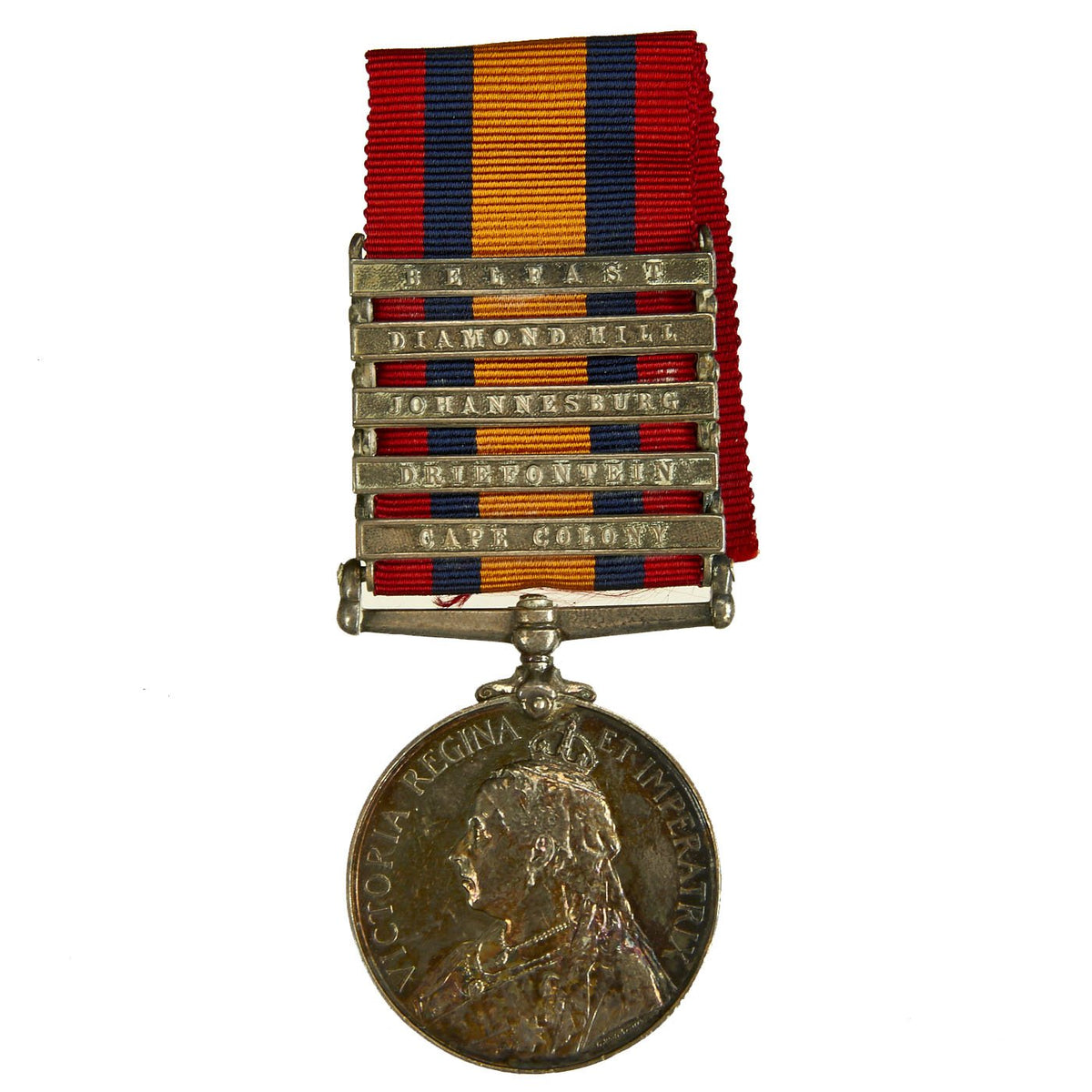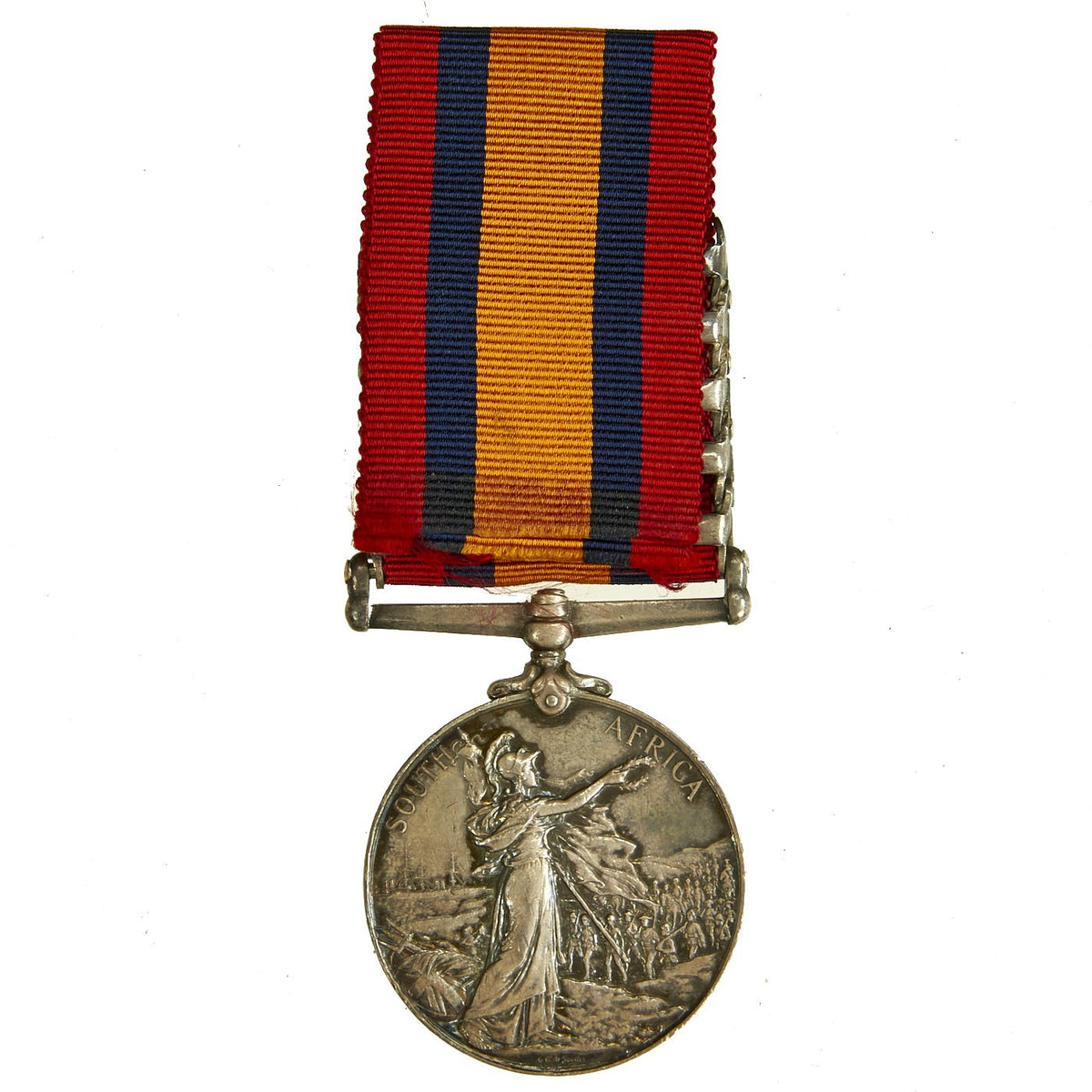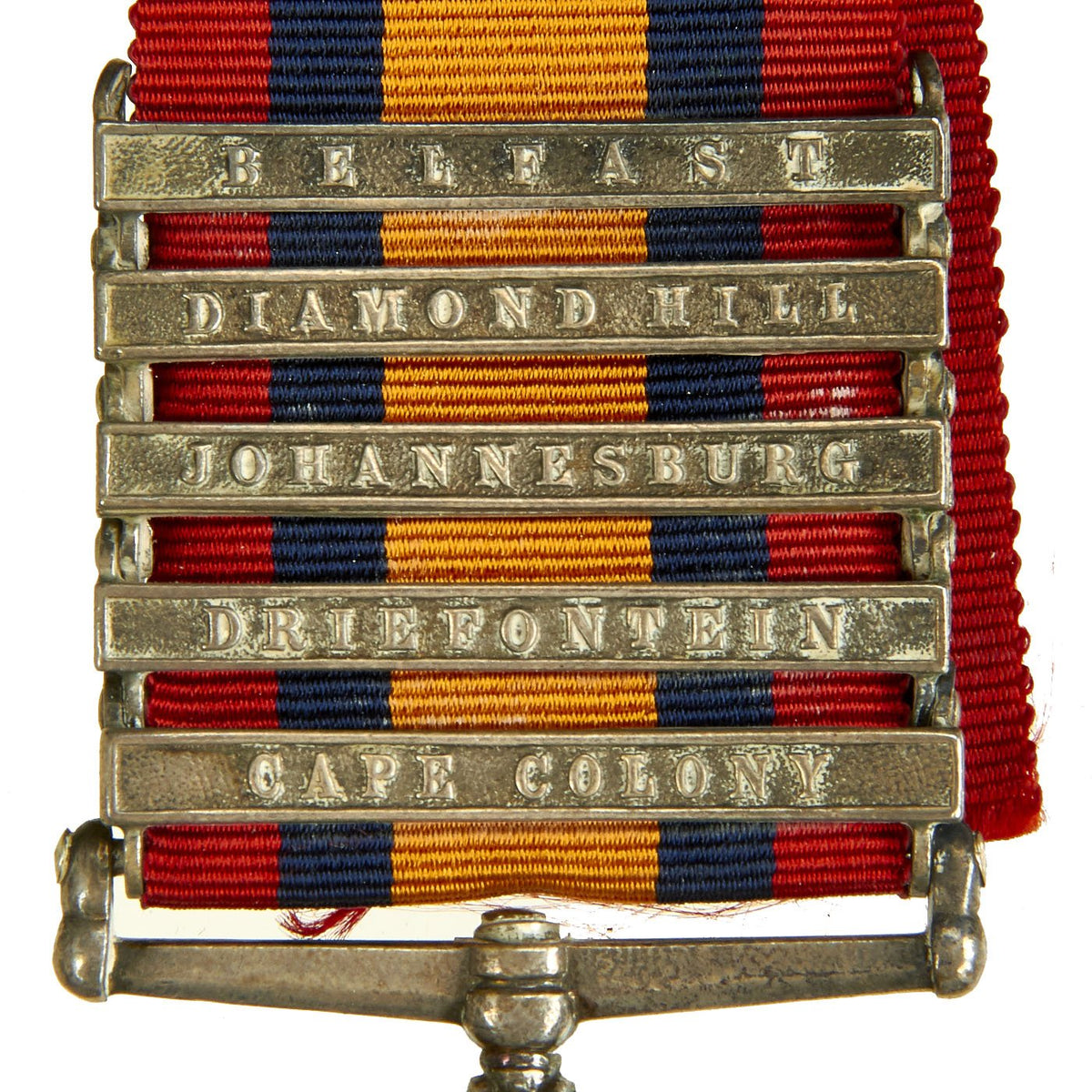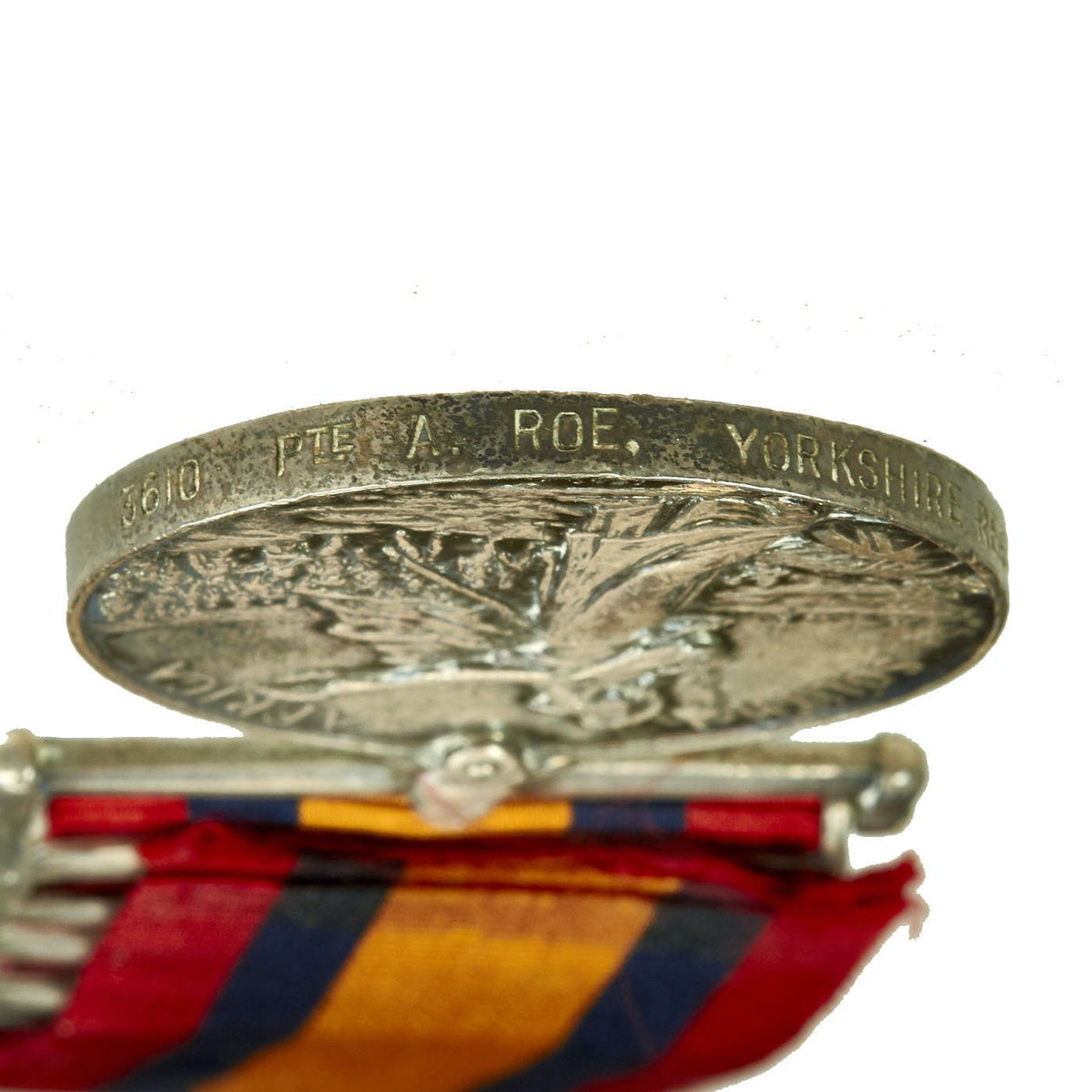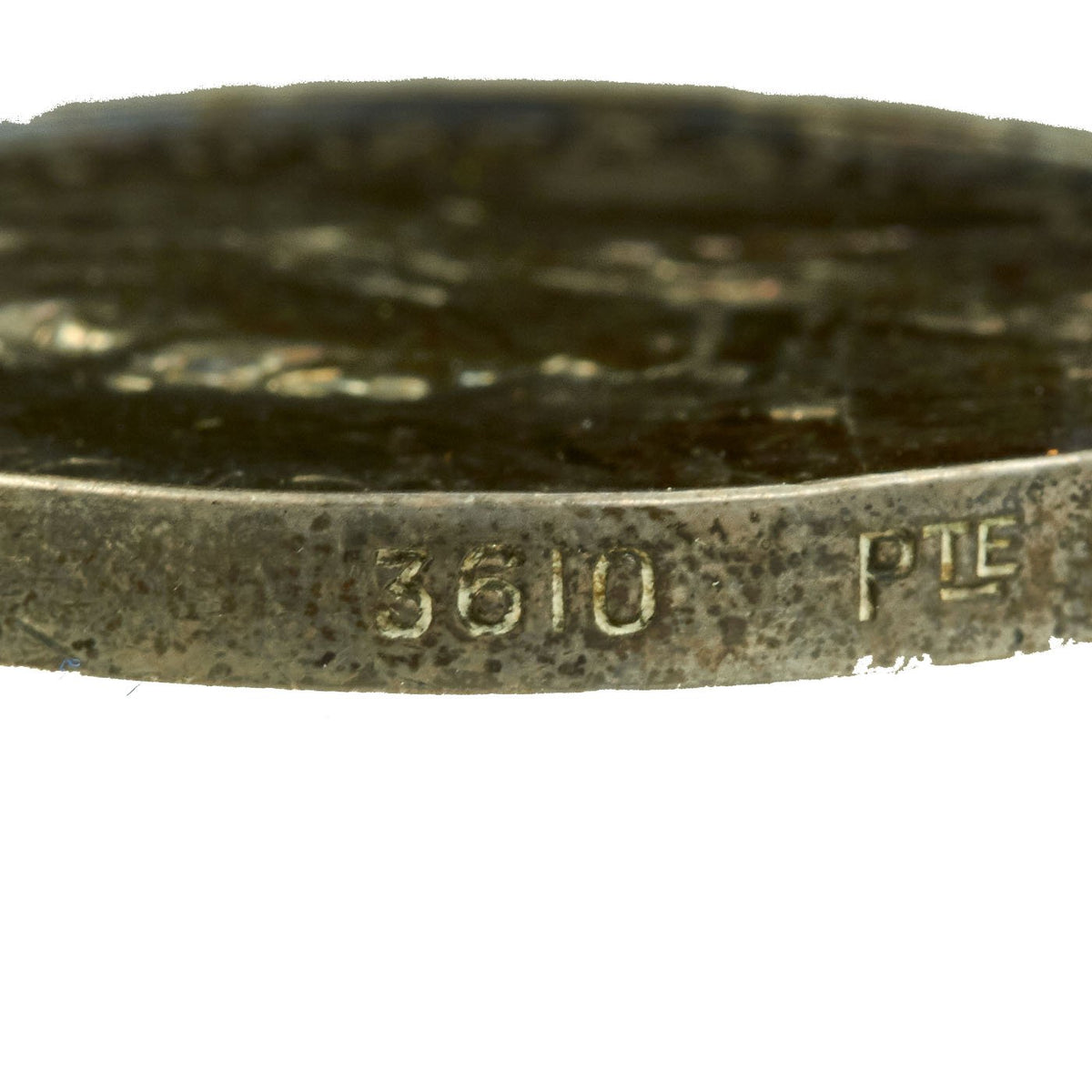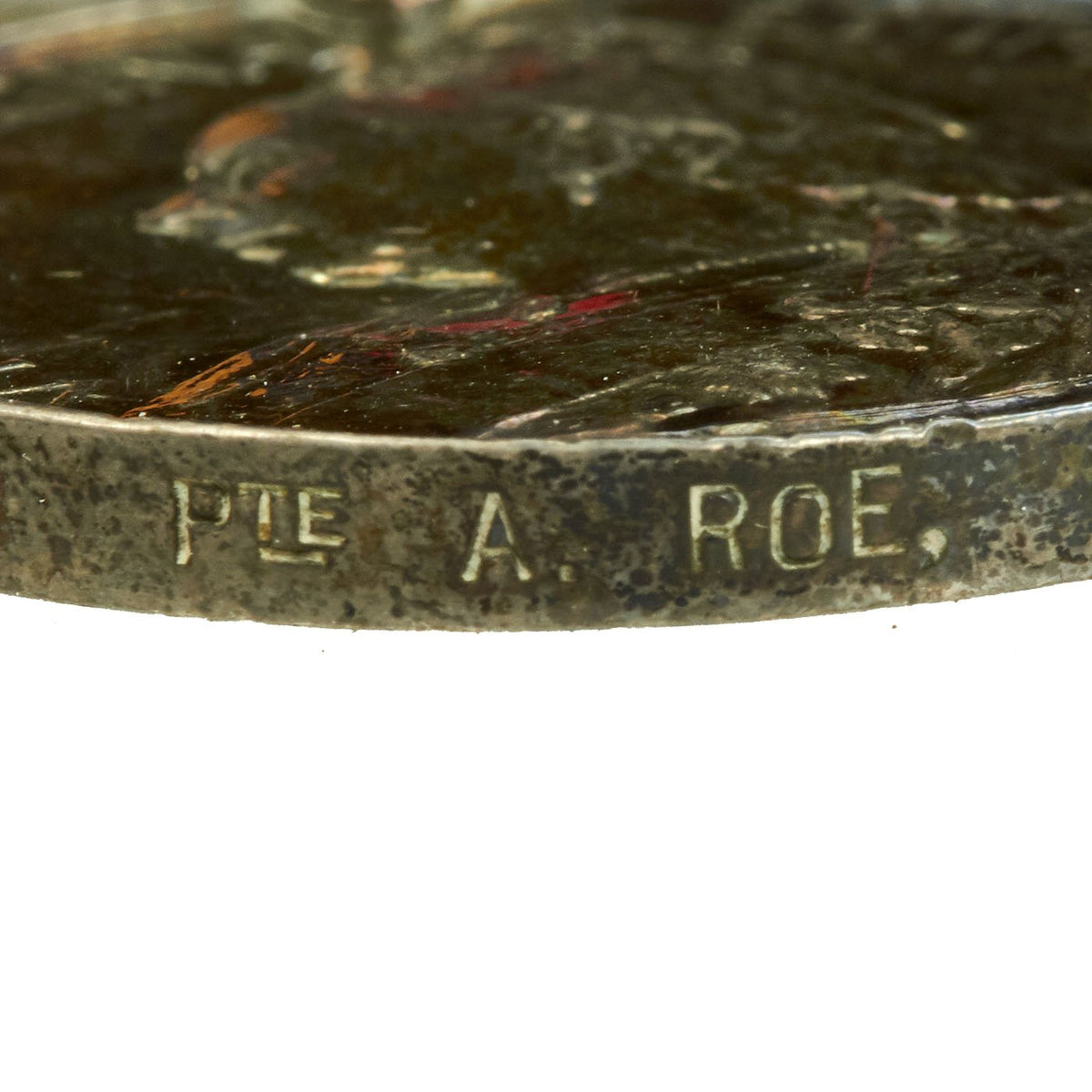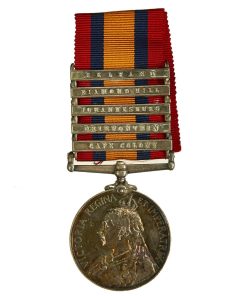Original British Second Boer War Named Queen’s South Africa Medal 1899-1902 – The Yorkshire Regiment Original Items
$ 325,00 $ 97,50
Original Item: One-of-a-kind. The Queen’s South Africa Medal is a British campaign medal awarded to British and Colonial military personnel who served in the Second Boer War in South Africa. Altogether twenty-six clasps were awarded, to indicate participation in particular actions and campaigns.
The Queen’s South Africa Medal was instituted by Queen Victoria in 1900, for award to military personnel and officials who served in South Africa during the Second Boer War from 11 October 1899 to 31 May 1902.
Three versions of the medal are known. Since the war was initially expected to be of short duration and to reach its conclusion in 1900, the first medals were struck with the years “1899” and “1900” on the reverse. Approximately fifty of these medals were awarded before it became evident that the war was going to last much longer, and both the dies and the remaining minted medals had the years machined off. The third version was minted without the years.
This example is the third type and is offered in excellent condition. It has five clasps;
BELFAST (26–27 August 1900). Awarded to troops east of a north-south line drawn through Wonderfontein, the garrison and troops quartered at Wonderfontein excluded, west of a north-south line drawn through Dalmanutha Station and north of an east-west line drawn through Carolina in the South African Republic.
DIAMOND HILL (11–12 June 1900). Awarded to troops east of a north-south line drawn through Silverton Siding and north of an east-west line drawn through Vlakfontein in the South African Republic.
JOHANNESBURG (29 May 1900). Awarded to troops north of an east-west line drawn through Klip River Station (exclusive) and east of a north-south line drawn through Krugersdorp Station (inclusive) in the South African Republic.
DRIEFONTEIN (10 March 1900). Awarded to those with Army Headquarters, and Lieutenant General John French’s column, which advanced from Poplar Grove in the Orange Free State.
CAPE COLONY (11 October 1899 – 31 May 1902). For service in the Cape of Good Hope where no clasp for a specific action in the Cape had been received.
The rim of the medal is impressed:
3610 PTE A. ROE YORKSHIRE REGT
This medal was originally acquired in the early 1960s and is still contained in an original Merchants Bank Safety Deposit Envelope. It remained in a private collection since being acquired in 2020.
The Green Howards (Alexandra, Princess of Wales’s Own Yorkshire Regiment), frequently known as the Yorkshire Regiment until the 1920s, was a line infantry regiment of the British Army, in the King’s Division. Raised in 1688, it served under various titles until it was amalgamated with the Prince of Wales’s Own Regiment of Yorkshire and the Duke of Wellington’s Regiment (West Riding), all Yorkshire-based regiments in the King’s Division, to form the Yorkshire Regiment (14th/15th, 19th and 33rd/76th Foot) on 6 June 2006.
The regiment saw action at the Battle of Alma in September 1854 and at the Siege of Sevastopol in winter 1854 during the Crimean War and then saw action again during the Indian Rebellion. In 1875, Princess Alexandra, Princess of Wales presented new colors to the 1st Battalion at Sheffield, and consented to the regiment bearing her name, thus becoming the 19th (1st Yorkshire North Riding – Princess of Wales’s Own) Regiment of Foot.The regiment adopted a cap badge consisting of the Princess’s cypher “A” combined with the Dannebrog or Danish cross and topped by her coronet. The Princess became Queen Alexandra in 1901, and was the regiment’s Colonel-in-Chief from 1914 until her death in 1925
Fast Shipping with Professional Packaging
Thanks to our longstanding association with UPS FedEx DHL, and other major international carriers, we are able to provide a range of shipping options. Our warehouse staff is expertly trained and will wrap your products according to our exact and precise specifications. Prior to shipping, your goods will be thoroughly examined and securely secured. We ship to thousands clients each day across multiple countries. This shows how we're dedicated to be the largest retailer on the internet. Warehouses and distribution centres can be located throughout Europe as well as the USA.
Note: Orders with more than one item will be assigned a processing date depending on the item.
Before shipping before shipping, we'll conduct a thorough inspection of the items you have ordered. Today, the majority of orders will be delivered within 48 hours. The delivery time will be between 3-7 days.
Returns
The stock is dynamic and we cannot completely manage it because multiple stakeholders are involved, including our factory and warehouse. So the actual stock may alter at any time. It's possible that you may not receive your order once the order has been made.
Our policy is valid for a period of 30 days. If you don't receive the product within 30 days, we are not able to issue a refund or an exchange.
You can only return an item if it is unused and in the same state as the day you received it. You must have the item in its original packaging.
Related products
Uncategorized
Uncategorized
Uncategorized
Uncategorized
Uncategorized
Angolan Rebel 1970s era 60mm Inert Display Mortar from Angolan Civil War Original Items
Uncategorized
Uncategorized
Uncategorized
Uncategorized
Uncategorized
Uncategorized
Armoured Fighting Vehicles of the World: AFVs of World War One (Hardcover Book) New Made Items
Uncategorized
Uncategorized
Uncategorized
Uncategorized
Uncategorized
Uncategorized
Uncategorized
Band of Brothers ORIGINAL GERMAN WWII Le. F.H. 18 10.5cm ARTILLERY PIECE Original Items
